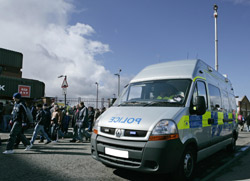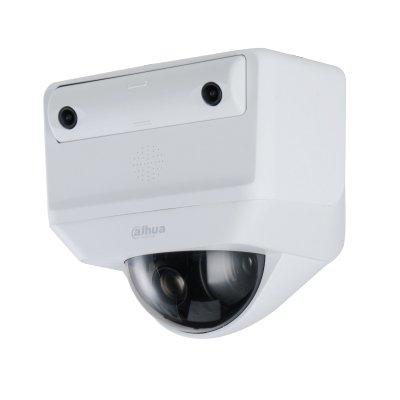With the new football season in England now in full swing, it is perhaps opportune to reflect on the scenes captured on CCTV of Rangers fans running amok in Manchester city centre before and after the 2008 UEFA Cup Final - including a vicious attack on a police officer who became detached from his unit. To some commentators, this eruption of violence may have appeared to signal a return to the bad old days of soccer hooliganism in England. For my part, I believe that however shocking the scenes, this sort of behaviour is very much the exception rather than the rule which of course made it all the more newsworthy when it happened.
A combination of factors was undoubtedly at play in Manchester which appear to have fuelled the violence beyond what could realistically have been anticipated. The sheer number of visiting supporters - some estimates have put it as high as 150,000 - is unprecedented for Manchester and akin to the population of a small city arriving en masse; the fact that the majority of travelling fans did not actually hold tickets for the game and so could not be controlled in or near the stadium - fans were generally well behaved in this area; the large quantities of alcohol being consumed from early on during match day and the warm weather - experience suggests that troublemakers tend to be deterred by inclement conditions, and the concentration of fans in certain areas. All of this meant that when, for example, a big screen set-up to show the match failed, pandemonium ensued leading to 42 arrests and 15 injured police officers.
The good news for football fans and the authorities is that the vast majority of football games held in England are far removed from Manchester's violence, and even in this extreme case CCTV images have helped to identify some of the perpetrators. Today the police, and football clubs, are much more adept at crowd control with a greater range of techniques at their disposal than in the seventies or eighties, when football trouble was at its height, and was often referred to disparagingly as the 'English disease'. Lessons have been learnt and more effective stewarding, all-seater stadia and, crucially, static and mobile CCTV technology all now play an important part in making football grounds a safe and enjoyable place to be on a Saturday afternoon, with more and more families becoming regular attendees.
When it comes to digital mobile CCTV for crowd control and safety, in particular, we are seeing the widespread deployment of extremely capable
 |
| Football Command Vehicles (FCVs) enable coverage of large areas and provide a high visibility presence |
Careful positioning of the vehicle, in conjunction with a small number of officers, can effectively maintain a large crowd's dynamics by moving or splitting sections of fans, so they move in the required directions to prevent dangerous bottlenecks and clashes of fans developing.
The evidence gathered by the FCV's on-board CCTV system can be used to make effective command decisions to ensure public order - for example whether additional officers need to be deployed; shared with the football ground's own CCTV control room, and to secure subsequent convictions. Typically, the police commander for a game will work out of the FCV in the lead-up to kick-off and then move to the stadium's CCTV control room, during the match itself, and then re-deploy to the Football Command Vehicle to ensure the fans have been dispersed effectively at the end of a match.
So while the events in Manchester last May were worrying at first glance, the real message to take away is that, despite its high profile, in the vast majority of cases crowd control and the behaviour of fans has moved on in leaps and bounds supported by new solutions like mobile CCTV. Today thousands of supporters can watch their clubs, week in and week out, without their enjoyment being blighted by hooliganism and I, for one, do not envisage this positive situation changing anytime soon.

















